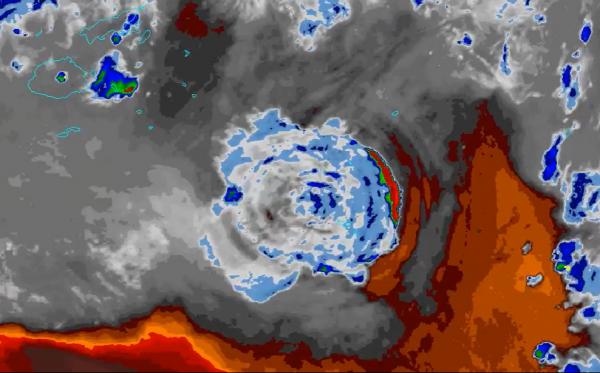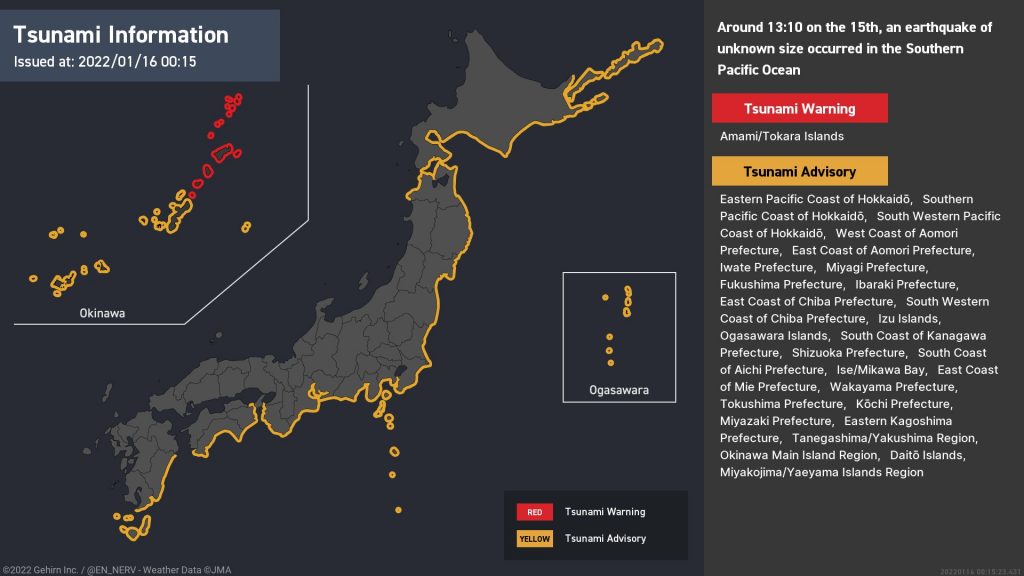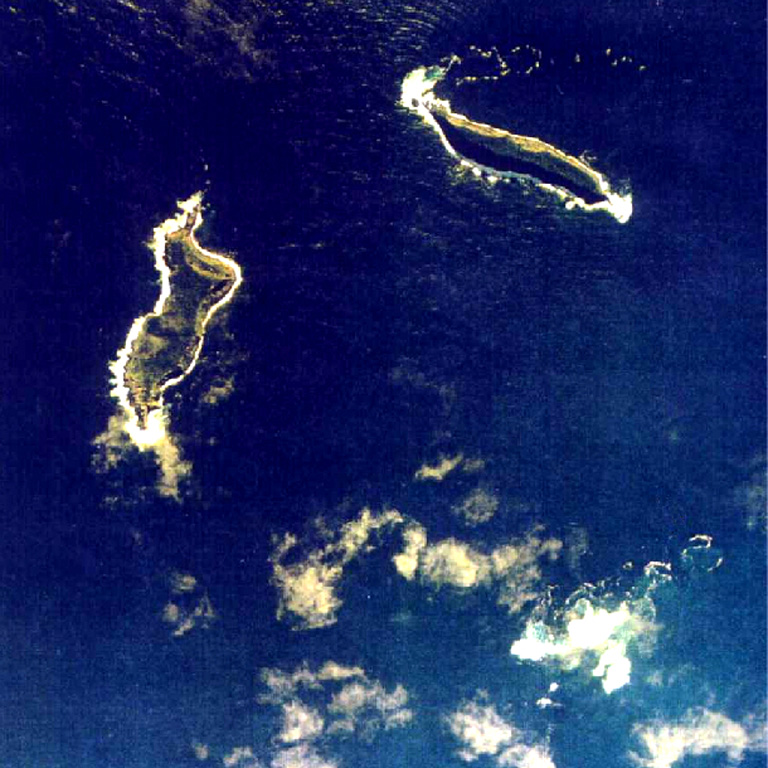Powerful Volcanic Eruption Strikes Tonga, Tsunami strikes New Zealand, Australia

Overview

A powerful undersea volcanic eruption near Tonga occurred at 05Z on January 15, 2022, caused by the Hunga Tonga-Hunga Ha’apai undersea volcano. Incredible amounts of ashfall and a weak tsunami were reported, causing significant disruptions to the Tongan islands. The blast was incredibly powerful, with a shockwave being noted by the Japanese satellite Himawari-8, and was felt as far away as the northern island of New Zealand. The shockwave was estimated to have been traveling at an astounding 640mph as it raced across the South Pacific. The shockwave was reported as far away as Macau, China and Perth, Washington, United States. Extreme amounts of ash coated the island, turning the sky almost completely pitch black instead of the usual island sunset. The ash was once again captured by Himawari-8 imagery, with the infrared bands showing the height of the ash and the dispersion of the ash, which is likely to have reached the stratosphere which could result in climatic impacts. While it ultimately remains to be seen how much total ash was produced, it appears to be a large amount compared to previous eruptions and eruptions of the 2020s in general. The volcanic eruption appears to be one of the most powerful eruptions to strike the entire planet at least in the last ten years, shown by the ultimate power of the volcano with the shockwave. While the true intensity of the eruption is not known at this time, it appears to be a significant eruption, and official intensity projections will likely come out in the next few days.
Himawari-8 B&W Imagery from NWS Honolulu
Tsunami
A weak tsunami was produced by the eruption, mainly impacting New Zealand and Australia due to the proximity to the eruption. Local islands around the eruption also felt significant impacts. A 1.19m tsunami wave was registered at Nuku’ Alofa in Tonga, with a 1.27m wave recorded at Norfolk Island, Australia, and a 1.18m wave being reported at Port Villa in Vanuatu. Furthermore, a 1.2-meter tsunami height was reached in Kagoshima, Japan. The Japanese Meteorological Agency has issued a tsunami warning for the Amami and Tokara Islands, where a wave height of 3m was reached. Most other measurements have been minimal with no significant tsunami damage being reported except for the areas in close proximity to the blast. Tsunami advisories were in effect for large portions of the Western United States from Alaska to California. The tsunami is not expected to create significant impacts across the whole pacific, with the main impacts being dangerous rip currents and disrupted seas. Again, the tsunami threat is rather minimal from the volcanic eruption, and was largely limited to regions in close proximity to the eruption.

Historical Comparisons

Today’s eruption of the Hunga Tonga-Hunga Ha’apai volcano is likely the strongest recorded eruption from the volcano ever recorded. The first noted eruption of the volcano was on April 29, 1912 with a Volcanic Explosivity Index of 2. Four more eruptions were noted, one in 1937, another in 1988, with other eruptions in 2009 and 2014. All of these eruptions were extremely weak, recording a VEI of 2. While an official intensity for the volcano has not been established as of the writing of this article, it does appear that the volcanic eruption was stronger than any other recorded eruption, primarily due to the strength of the shockwave and the immense amount of ash produced. Comparisons for the volcano are generally difficult to make out of an abundance of caution and the general rarity of such events- including this volcano in particular. However, the volcano’s eruption today is likely to be in the history books due to the power and imagery captured from weather satellites such as Himawari-8 which showcased the eruption in an awesome fashion. However, for residents of the Tongan islands, cleanup from the tsunami and ash removal will become the main priority in the days ahead.
Historical information on the Hunga Tonga-Hunga Ha’apai volcano resourced from the Smithsonian Institution’s Global Volcanism Program, as well as the picture of the islands. MLA citation can be seen below.
Global Volcanism Program, 2013. Hunga Tonga-Hunga Ha’apai (243040) in Volcanoes of the World, v. 4.10.4 (09 Dec 2021). Venzke, E (ed.). Smithsonian Institution. Downloaded 15 Jan 2022 (https://volcano.si.edu/volcano.cfm?vn=243040).
Force Thirteen will be covering the impacts from the volcanic eruption, with updates on our regional channels and through our Twitter and Facebook accounts. Stay tuned for more updates!
